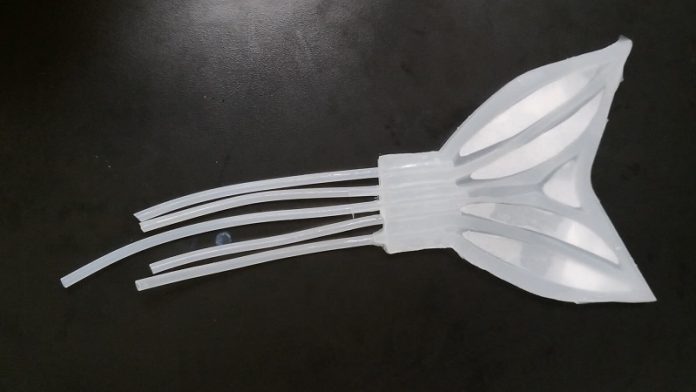
Cecilia Huertas Cerdeira has always been fascinated by the ocean. Growing up in Spain, she loved watching fish swim during family vacations on the Atlantic coast.
Later, while surfing Pacific waves during her time as a doctoral student at the California Institute of Technology, she became even more curious about how sea creatures move through water with such grace.
Now, as a mechanical engineering professor at the University of Maryland, Huertas Cerdeira is using that curiosity to build better underwater drones.
These unmanned underwater vehicles (UUVs) are used to explore the ocean and do jobs that are too risky or expensive for people. But today’s UUVs are slow and not very agile.
Huertas Cerdeira wants to change that—with help from tuna.
She and her team are designing a robotic fin inspired by the tail of a tuna fish.
This special fin will help the drone swim faster, turn more smoothly, and use less energy than traditional propellers. “We can’t build a real fish,” she said, “but we can build a robot that moves like one—and even improve it.”
Her idea comes from a research paper she coauthored, recently published in Scientific Reports.
The team hopes to finish building the robotic fin and start testing it in water by the end of the year. If all goes well, the full underwater drone will be ready for real-world tests in two or three years.
Why is this important? Underwater drones are already used to inspect oil pipelines, monitor melting ice, clean up pollution, study marine life, and even find underwater mines. But current models use propellers that stick out, create drag, and make noise—sometimes scaring fish or giving away military missions.
By copying the shape and movement of a tuna’s tail, Huertas Cerdeira’s robotic fin could solve these problems. Fish tails are quiet, smooth, and very efficient. What makes them special is that they’re not stiff like a propeller. As fish swim, their fins change shape—getting softer or stiffer in different spots. The research team wants to mimic this by creating air-filled sections inside the fin that adjust while moving through water.
“There are a lot of amazing ideas in nature that we don’t always notice as engineers,” she said.
In the future, this bio-inspired design could lead to faster, smarter, and quieter underwater robots, making ocean research and exploration safer and easier.
As Huertas Cerdeira says, “Improved propulsion systems can help push our underwater activities to the next level.”
Source: University of Maryland.



